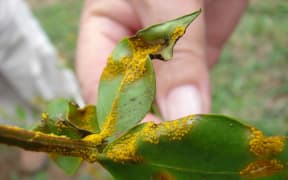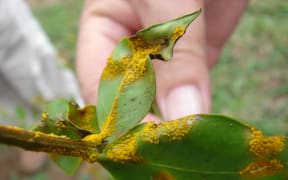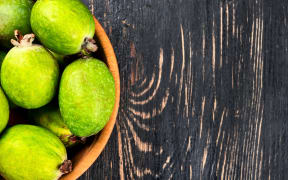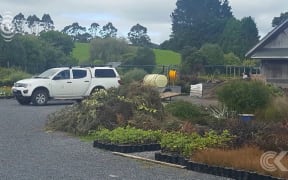Myrtle rust is continuing to spread in Taranaki, with the fungal disease found in established pōhutukawa for the first time.
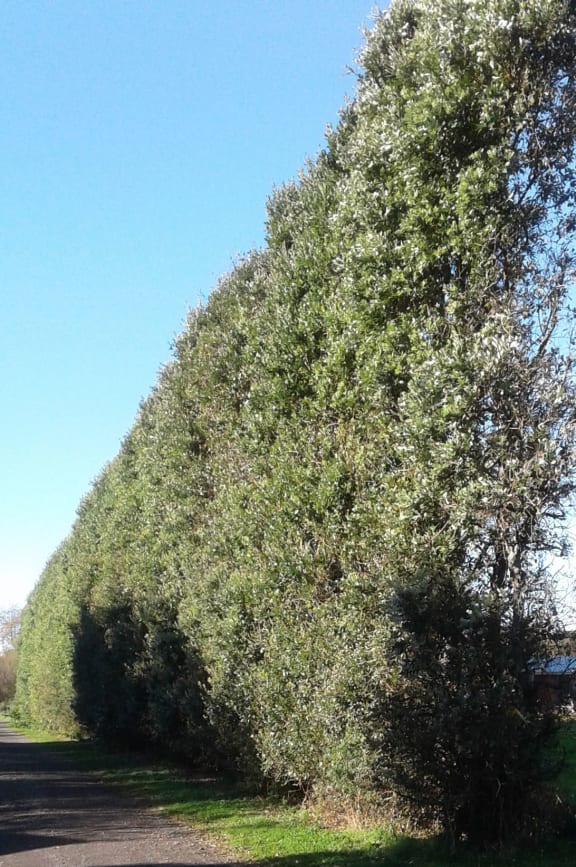
The infected pōhutukawa hedge belt in Taranaki. Photo: Supplied
The disease has now been found on 21 properties in the province, with three more infections in Northland and two in Waikato.
The Ministry for Primary Industries (MPI) said the latest Taranaki discovery was an extensive outbreak in a well-established pōhutukawa hedge, which has since been destroyed.
All of the other infections have been on seedlings and young plants.
The infected shelter belt was on a rural property in Waitara in North Taranaki. It was about 50m long and 6m tall and made up of many individual pōhutukawa plants.
The disease was visible both at the bottom of the row and in the tops of the trees,
The hedge was immediately pulled down and safely disposed of, to remove any risk.
The other species affected so far are ramarama, lophomyrtus, eucalyptus, mānuka and monkey apple.
MPI said the Big Jim's retail outlet in Taranaki - which was closed for the treatment of myrtle rust - would reopen for business tomorrow.
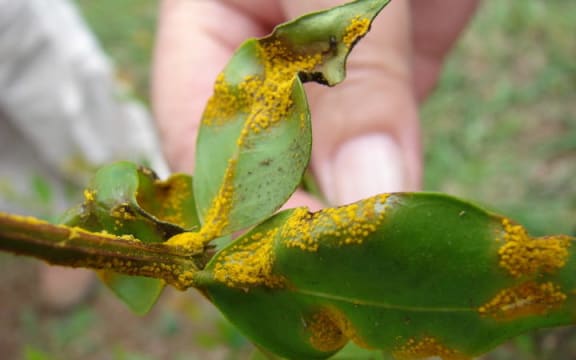
Myrtle Rust has been found in a plant nursery in Taranaki. Photo: Supplied
How did myrtle rust get here?
Meanwhile, scientists are getting closer to discovering when myrtle rust spores could have been blown to New Zealand.
NIWA has been modelling wind dispersal from Australia, Raoul Island and New Caledonia.
MPI said it was keeping up to date with that modelling, and it showed there were six times in January and February, and once in March and April, when spores from Australia could have reached New Zealand.
The ministry said it was still waiting on NIWA's final report.

